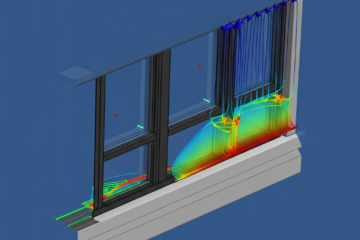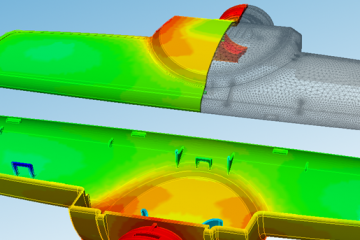A Step-by-Step Guide to Fatigue Calculix Analysis
Introduction
Fatigue analysis is a crucial aspect of engineering design, ensuring that components can withstand repeated loading cycles over time. CalculiX, an open-source finite element analysis (FEA) software, provides a robust platform for performing fatigue analysis. In this guide, we’ll walk through the key steps to conduct a fatigue analysis using CalculiX.
Understanding Fatigue Analysis
Fatigue analysis involves assessing the structural integrity of a component subjected to cyclic loading. This analysis helps engineers predict the lifespan of a structure and avoid unexpected failures due to repeated loading and unloading.
Steps in Fatigue Analysis Using CalculiX
1. Geometry and Material Definition:
- Geometry Import or Creation: Begin by importing or creating the 3D geometry of the component you want to analyze using a CAD tool.
- Material Properties: Define material properties such as Young’s modulus, Poisson’s ratio, and, most importantly, fatigue-related properties.
2. Meshing:
- Generate Mesh: Use CalculiX tools or external meshing software to create a finite element mesh of the geometry. Ensure appropriate mesh density, especially in regions with high stress concentrations.
3. Loading Conditions:
- Apply Loads: Define loading conditions, including static and dynamic loads. Specify the magnitude, direction, and frequency of the loads.
- Boundary Conditions: Set up constraints and supports to simulate real-world operating conditions.
4. Fatigue Analysis Setup:
- Select Fatigue Analysis Method: In CalculiX, fatigue analysis is typically performed using the ‘fracture mechanics’ method. Define the relevant parameters, such as fatigue strength coefficient (σf’) and fatigue ductility exponent (b).
- Define Loading Cycles: Specify the loading history, including the number of cycles and load magnitudes.
5. Solver Settings:
- Configure CalculiX Solver: Adjust solver settings based on the analysis requirements. Set parameters such as the number of increments, convergence criteria, and time-stepping options.
6. Post-Processing:
- Extract Results: Analyze stress, strain, and deformation results. Focus on areas of interest with potential fatigue concerns.
- Fatigue Life Prediction: Use CalculiX post-processing tools to predict the component’s fatigue life based on the applied loading cycles.
7. Iterative Refinement:
- Evaluate and Refine: Assess the simulation results for potential failure points. If needed, refine the model, adjust material properties, or revisit loading conditions.
Best Practices and Considerations
- Material Data:
- Use accurate material properties, especially fatigue-related data such as fatigue strength coefficients and exponents.
- Loading Realism:
- Simulate loading conditions as close to real-world scenarios as possible.
- Mesh Quality:
- Ensure a high-quality mesh to capture stress concentrations accurately.
- Validation:
- Validate simulation results with experimental data or analytical solutions to enhance model accuracy.
Conclusion
CalculiX provides a powerful platform for fatigue analysis, allowing engineers to assess the durability of components under cyclic loading conditions. By following the steps outlined in this guide and considering best practices, you can perform effective fatigue analysis using open-source FEA tools.
Always refer to the official CalculiX documentation and user guides for detailed instructions and specific features related to fatigue analysis. Happy simulating!
CloudHPC is a HPC provider to run engineering simulations on the cloud. CloudHPC provides from 1 to 224 vCPUs for each process in several configuration of HPC infrastructure - both multi-thread and multi-core. Current software ranges includes several CAE, CFD, FEA, FEM software among which OpenFOAM, FDS, Blender and several others.
New users benefit of a FREE trial of 300 vCPU/Hours to be used on the platform in order to test the platform, all each features and verify if it is suitable for their needs




0 Comments